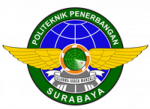Airfield Lighting System (Skilled) Training that provides knowledge about a visual landing aid that functions to assist and serve aircraft during take-off, landing, and taxiing so that they can move efficiently and safely.
Objectives:
This training is aimed at increasing the competency of airport electrical personnel in the operation and maintenance of electrical facilities to improve performance and streamline airport operations effectively and efficiently, thereby supporting aviation safety and security
Competency Standards:
- Able to explain definition, functions, and Categories of ALS
- Able to explain related regulations of ALS
- Able to explain Occupational Health and Safety (OHS)
- Able to explain the equipment of signal and beacon
- Able to explain marking and marker
- Able to explain types and functions of lights and their applications in the field
- Able to explain and implement the composition and layout of ALS
- Able to explain and practice the ALS control system
- Able to explain completeness installation and perform the installation
- Able to explain and make a series of ALS equipment installation
- 11.Able to explain Topography
- Able to explain and practice about the use of measuring instruments
- Able to explain and practice operating procedures
- Able to explain maintenance and reporting
Key Topics:
- ALS introduction: definition and functions, categories of ALS
- ALS related regulations
- Occupational Health and Safety (OHS)
- Signal and Beacon: Wind Direction, Landing Direction Indicator, Aerodrome Beacon, Obstruction Light, Apron Flood Light, Sirine, instruction, and Signal
- Types and functions of Marking and Marker
- Types and functions of lights: R/W Light System, Approach Light System, T/W Light System, PAPI
- The composition and layout of ALS
- ALS Control System: Type of Control System, Airfield Lighting Control System (ALCS), SQFL/RTIL
- Installation Completeness: Cables and Connectors, Transformer Series, Grounding, Transformer tank, Cable Digging
- ALS Series, R / W Light and Approach Light Installation, installation, and setting the angle of PAPI
- Topography: the use of Theodolite, Topographic Measurement For R / W Light, Approach Light, T / W Light, PAPI
- The use and reading of measuring instruments
- Operation Mode
- Maintenance, and Reporting
Training Hours:
- 38 Hours of Lessons (Theory)
- 42 Hours of Lessons (Exercise)
- Total 80 Study Hours
Training Hours:
Learning modules, training equipment, visits, On The Job Training, and competency certificates
Participant Requirements:
- Intended for all personnel in the airport electricity sector at the Directorate General of Civil Aviation or Angkasa Pura I and Angkasa Pura II
- Have a basic certificate

